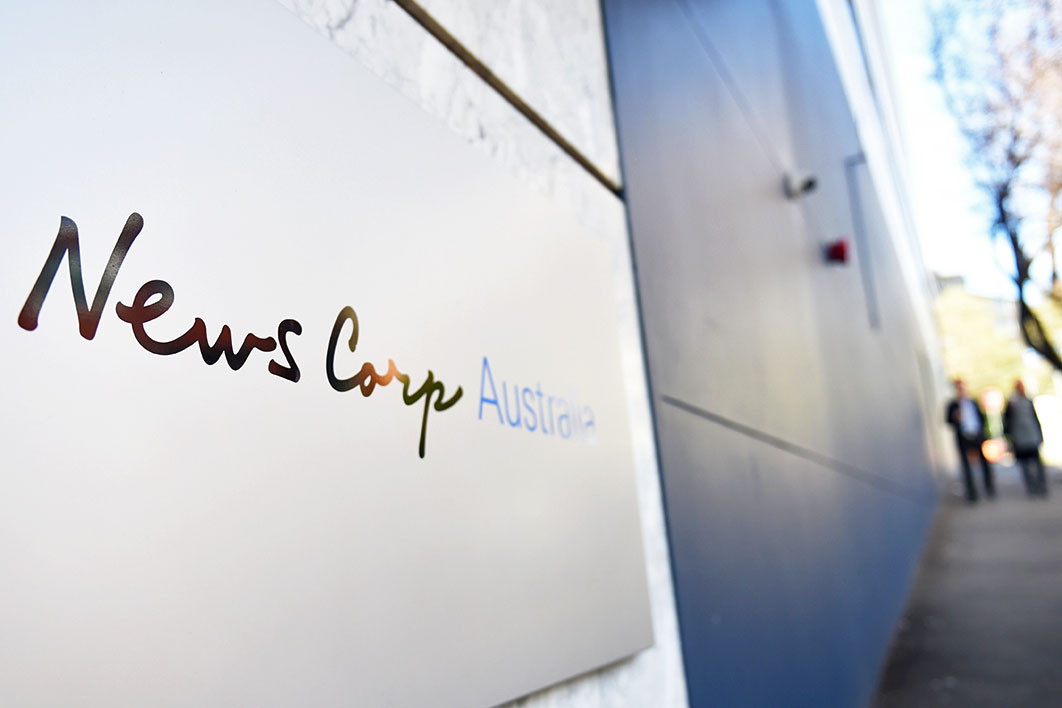This week the Australian published the results of an extra Newspoll question energetically skewed to elicit a particular view of one of its current hobbyhorses. The pollster had put this question to respondents over the weekend:
The Australian National University has a centre for Islamic studies and offers a bachelor of Asian studies. Do you think it should also offer a degree in the study of Western civilisation?
You won’t be surprised to hear that the results were massively in the affirmative (66 per cent yes, 19 per cent no, and 15 per cent uncommitted).
It’s not the first time this newspaper–pollster duo has played hard and fast with respectable practice. Four weeks ago they performed an exercise so slanted it bordered on parody.
On that occasion, Newspoll presented respondents with the Turnbull government’s full, unlegislated company tax cuts as if they were a fait accompli. When should they be introduced, respondents were asked, with one of three options being “not at all.” The other two, “immediately” and “over ten years” together attracted the most support, which left the journalist to report massive support for the policy under the headline “Tax cuts now more popular than gay marriage, polls show.”
Some history is relevant. In 2015 the company known as Newspoll, half-owned by News Corp, was disbanded. Another company, Galaxy, became the Australian’s political pollster. (With its mixed-platform strategy, it presumably offered a much cheaper product than its telephone-only predecessor.) The name Newspoll was retained, however, along with the cache of the respected outfit that Sol Lebovic had founded in the mid 1980s. And so Newspoll in the Oz remained the pollster the political class obsesses over most.
There’s nothing wrong with Galaxy’s survey methods — their election-eve voting-intention numbers are generally close to the mark — but reputationally aware pollsters need to be willing, from time to time, to say no to clients, or prospective clients. Even if it means losing business. “Sorry,” they might say. “That question is loaded, we’re not going to use it.”
I believe Lebovic, and his successor Martin O’Shannessy, would have nixed the question about company taxes and the one about Western civilisation. (ACNielsen, when it was polling politics for Fairfax, was similarly fastidious.)
On the other side of the ideological spectrum, robopollster ReachTEL, favoured by left-wing proselytisers, also appears to have a client-friendly disposition to question content. For more on that, see Adrian Beaumont in the Conversation.
(None of this, I should stress, is the same as “push polling,” the practice of attempting to directly influence public opinion by spreading information, accurate or otherwise, under the guise of surveying. There, the “results” are of secondary importance, or more often not used at all.)
You could say: well, pollsters can do what they like with their own reputations. You pays your money, you gets your results; just don’t expect people to take it seriously. The problem is that journalists do treat these products with seriousness: the Guardian, for example, regularly repeats at face value the latest survey offering from the Australia Institute (which often uses ReachTEL).
Still, questions about voting intention are, we hope, sacrosanct. The wording remains constant, and they go at the top of the survey (or at least atop the political section) so they are not polluted by other questions. And at the moment all the pollsters are saying the same thing: Labor is comfortably ahead after preferences.
Too far ahead to lose? Well, former prime minister John Howard has dutifully been talking up the Turnbull government’s election chances recently. He notes that on the last three occasions when the federal government changed hands “the primary vote of the winning party was in the middle forties for a consistent period of six or twelve months before the election.” Today, by contrast, “the Labor primary vote has been stuck below 40 per cent for a very long time.”
Nice try Mr Howard, but you left out the bit about Coalition primary support also languishing in the high thirties. Likely Greens, One Nation and other preferences put Labor on around 52 to 53 per cent.
At the last election, the combined primary vote for the major parties was 76.7 per cent, the lowest since at least the second world war. It’s been headed south, in spits and spurts, for decades. We don’t know for sure that the total figure will be lower again at the next election, but it’s sure not going to increase much.
Estimating two-party-preferreds from such low primary votes can be an imprecise business; perhaps that’s what the former PM should have pointed out.
The other piece of silver lining Coalition optimists tug at from time to time is that Malcolm Turnbull’s leads his opponent in the preferred prime minister stakes (46–31 in the latest Newspoll) and in satisfaction/approval (40 per cent to Bill Shorten’s 33 per cent). These figures, they hope, will see him through.
That aspiration is also likely to be forlorn. It’s likely that voters’ evaluations of the two individuals are already built into the voting-intention figures, where a residual respect for the prime minister, and the low esteem in which the presentationally challenged opposition leader is held, are keeping the contest reasonably competitive.
In fact, sky-high personal ratings for the leader tend to artificially inflate voting intentions, making them likely to crash to earth as polling day approaches. (The most dramatic example of this is Labor and the stratospherically popular Kevin Rudd in 2007: ten- to twenty-point voting-intention leads whittled down to 5.4 per cent on election day.)
Labor remains very likely to win the next election. If the parties are led by the same individuals, those personal ratings will probably converge by election day. ●





